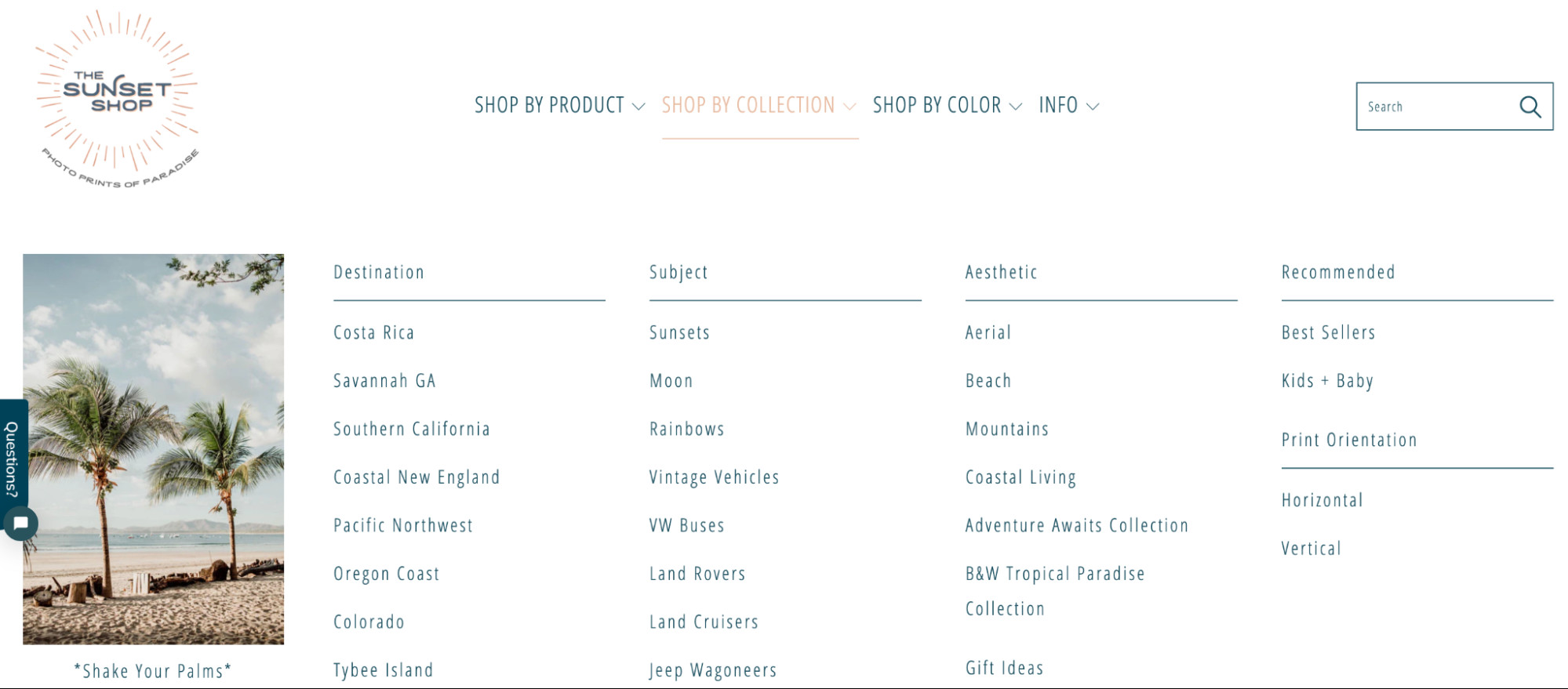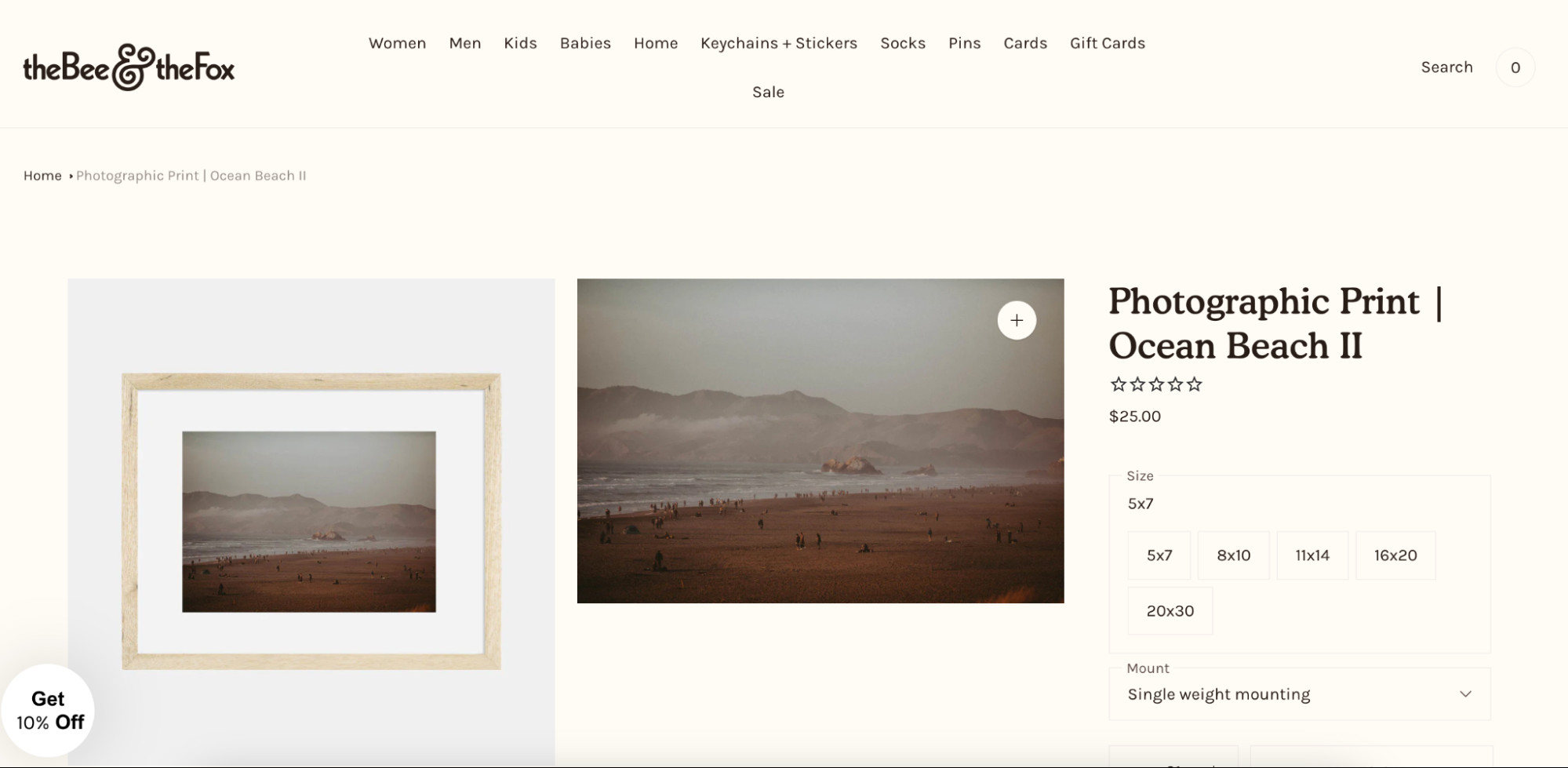Are you a photographer looking to turn your passion into profit? How To Sell Photos As Stock Images is a comprehensive guide to transforming your best shots into a source of income, brought to you by dfphoto.net. We’ll explore the ins and outs of selling stock photos, from choosing the right platform to optimizing your images for maximum visibility and revenue. Dive in to discover valuable insights on image licensing, niche selection, and building a strong online presence. Ready to monetize your photography skills and explore visual artistry? Let’s get started with stock photography, photography marketplace, and royalty-free images.
1. What Are The Best Websites For Selling Photos Online?
Many online platforms cater to photographers eager to sell their work, each offering unique features and commission structures.
1.1. Alamy
 Alamy Images homepage showing a search bar for people to find royalty-free images
Alamy Images homepage showing a search bar for people to find royalty-free images
Alamy stands out with its diverse stock photo collection, including images, vectors, videos, and 360-degree panoramic images. Alamy also offers an iOS app called Stockimo, where you can sell photos online from your phone.
How to get paid? Alamy pays contributors monthly, offering commissions between 17% and 50% of sales, depending on image popularity and license type. There are no long-term contracts, and you can be paid in multiple currencies.
1.2. 500px
 500px’s homepage that shows how contributors can get paid for their photos with licensing
500px’s homepage that shows how contributors can get paid for their photos with licensing
500px blends stock photo licensing with a vibrant community. It hosts millions of photographers who sell and license photos online. The Pulse algorithm highlights new talent, offering opportunities for emerging photographers to gain recognition, provided their photos meet the platform’s quality standards.
How to get paid? Paying members can earn up to 100% royalties for exclusive photos.
1.3. Shutterstock
 Shutterstock homepage that lets people find royalty-free images, video, and music
Shutterstock homepage that lets people find royalty-free images, video, and music
Shutterstock is a leading stock photography website known for its vast library and global reach. Shutterstock has paid out more than $1 billion to its community in the past 15 years.
How to get paid? Payouts range from 15% to 40%, based on earnings over time. An affiliate program offers additional income for referring new photographers or customers.
1.4. Getty Images
 Getty Images’ homepage with a search bar that helps people find photos and images
Getty Images’ homepage with a search bar that helps people find photos and images
Getty Images attracts brands and publishers seeking high-quality and exclusive images. It is known for its premium stock photos and rigorous standards.
How to get paid? After acceptance as a contributor, you can earn between 15% and 45% of an image’s license fee.
1.5. iStock
 Landing page for iStock that shows its generative AI-powered image creator
Landing page for iStock that shows its generative AI-powered image creator
iStock, an offshoot of Getty Images, allows non-exclusive photo sales, meaning you can sell your photography through other agencies as well.
How to get paid? Commissions range from 15% to 45%, depending on contributor agreements.
1.6. Stocksy
 Stocksy homepage with an art graphic of people in a library
Stocksy homepage with an art graphic of people in a library
Stocksy is an artist-owned cooperative that offers high payouts to contributors. It provides an accessible platform for newer photographers looking to sell online.
How to get paid? Contributors earn a 50% royalty on standard licenses and 75% on extended licenses, with all photos exclusive to the platform. Payments are made monthly via PayPal, Payoneer, or check, with a minimum payout of $100.
1.7. Picfair
 Picfair landing page for a website builder built for photographers
Picfair landing page for a website builder built for photographers
Picfair allows you to create your own photography e-commerce website and set your own prices for photos, prints, and digital downloads. Picfair handles payment processing, print production, shipping, and licenses for digital images.
How to get paid? Sign up for a Plus plan to create a custom Picfair store with up to 10,000 images.
1.8. Adobe Stock
 Adobe Stock homepage showing a search bar against a photo of sting rays in the ocean
Adobe Stock homepage showing a search bar against a photo of sting rays in the ocean
Adobe Stock integrates seamlessly with Adobe’s photography software suite, allowing you to add your images, videos, vectors, and illustrations directly from Lightroom and Bridge.
How to get paid? Contributors who link their Adobe ID to Adobe Stock can earn 33% royalties on photos and 35% on videos.
1.9. Envato Elements
 Landing page for stock photos on Envato Market
Landing page for stock photos on Envato Market
Envato Elements allows you to sell photos online and connect with potential clients. It offers the option to sell photos on its app or upload them to your own site on the brand’s domain.
How to get paid? Contributors earn between 25% and 50% of net subscription revenue.
1.10. Unsplash+
 Unsplash homepage showing stock photos and a call-to-action for Unsplash
Unsplash homepage showing stock photos and a call-to-action for Unsplash
Unsplash partners with photographers through its Unsplash+ program, where photographers respond to briefs and requests, rather than paying based on sales.
How to get paid? After acceptance, you can choose a brief that suits your skills, upload your photos, and get paid for each accepted image. Rates range, on average, between $5 and $30 per image.
1.11. Dreamstime
 Dreamtime homepage where you can sell photos
Dreamtime homepage where you can sell photos
Dreamstime is a microstock platform with a vast range of royalty-free media. With a library of more than 250 million files and a user base of over 50 million, Dreamstime gives photographers access to a large, active audience.
How to get paid? Dreamstime offers revenue sharing of 25% to 50% for non-exclusive content. Exclusive contributors earn an additional 10% and receive 20¢ for each approved submission.
1.12. Snapped4U
 Snapped4U homepage showing photos from sports photographers
Snapped4U homepage showing photos from sports photographers
Snapped4U is a marketplace for portrait and event photographers to create personalized galleries, set their own prices, and sell digital files directly to clients.
How to get paid? Snapped4U charges a one-time $10 registration fee and retains a 10% to 12% commission on sales. Photographers are paid the balance via PayPal on the first and 15th of each month.
1.13. Foap
 Foap creator landing page advertises a mobile app for photographers
Foap creator landing page advertises a mobile app for photographers
Foap allows photographers to sell commercial-quality images directly to brands and individuals. Photographers can participate in “missions,” where brands set specific photo or video requirements and reward winners.
How to get paid? Mission payouts range from $100 to $2,000. Foap takes a 50% commission on all sales on Foap market.
1.14. EyeEm
 EyeEm homepage with a search bar and examples of high-profile clients
EyeEm homepage with a search bar and examples of high-profile clients
EyeEm combines a marketplace with a photographer community and invites photographers to contribute to missions that call for images on a theme.
How to get paid? Contributors earn a 50% commission on each sale made through the EyeEm marketplace, paid via PayPal.
1.15. Pond5 (for videos)
 Pond5
Pond5
Pond5 is a marketplace for selling royalty-free videos, music, sound effects, and other assets. Contributors create Pond5 storefronts to showcase their media.
How to get paid? Video artists earn a 40% royalty share, with the option to make your content exclusive and earn up to 60%.
2. What Are Key Tips For Successfully Selling Photos Online?
Success in the stock photography market requires more than just taking great photos. It involves understanding your niche, engaging with your audience, and leveraging the right platforms.
2.1. Define Your Stock Photography Niche
Photographers often find success by focusing on a specific style or theme, such as travel, fashion, nature, or food. According to research from the Santa Fe University of Art and Design’s Photography Department, in July 2025, consistency is key in attracting a loyal audience.
2.2. Get on Instagram
Like bloggers and YouTubers, photographers should invest in building their audiences on visual social platforms such as Instagram to reach a wide audience.
2.3. Integrate Ecommerce Into Your Website
Adding a Shopify Buy Button to your site can make it easier for customers to purchase stock images from you.
 Product page for a print of a moon with a red border against a black background
Product page for a print of a moon with a red border against a black background
For example, photographer Dave Sandford has a store that both showcases his wildlife photography and offers the opportunity to purchase prints and calendars.
2.4. Understand Your Market
Knowing your target market—the group of people most likely to buy your photos—is crucial. Tailor your photos to appeal to their interests and needs. For example, if specializing in wedding photography, target wedding stationery brands or suit wholesalers.
3. How To Set Up Your Online Portfolio?
Creating an online portfolio is a critical step in showcasing and selling your photography.
3.1. Choose The Right Platform
The best platform depends on your goals and desired level of control. Options range from stock photo sites like iStock or Alamy for hobbyists to e-commerce platforms like Shopify for those seeking full control.
3.2. Plan Your Portfolio’s Structure
A well-structured portfolio should highlight your best work and provide context.
- Layout: Photos should be central, but descriptions can influence purchase decisions and improve SEO.
- Social proof: Include quotes from happy customers or showcase successful campaigns that used your images.
- Categories and organization: Help customers browse by tagging and organizing images into collections.
- Gallery size: Limit galleries to high-quality images that showcase your best work.
 Example product categories on a photo print website include “Costa Rica”, “Sunset”, and “Mountains”
Example product categories on a photo print website include “Costa Rica”, “Sunset”, and “Mountains”
The Sunset Shop has categories for the photo type, aesthetic, and destination.
3.3. Optimize Images For The Web
Fast-loading images are essential for user experience.
- Compress image sizes: Keep images as small as possible without compromising quality (compress between 60% and 80%).
- Use descriptive file names: Name your file “summer-evening-nature” instead of “IMG_3542.jpg.”
- Write alt text: Describe your photo for search engines and screen readers.
3.4. Create An About Page
An About page can help you connect with prospective customers by telling them who you are and the story of your photography journey.
3.5. Implement Ecommerce Functionality
An e-commerce platform like Shopify handles the logistics of selling photos online. This includes setting up an online storefront, taking payments, shipping products, and managing marketing campaigns.
 Product page for a 5×7 printed photo of a beach
Product page for a 5×7 printed photo of a beach
The Bee & The Fox uses Shopify to sell photography prints online.
3.6. Ensure Mobile Compatibility
Ensure your portfolio looks good on mobile devices, as more than half of global website traffic comes from mobile devices. This means using a responsive website design, displaying your photos vertically, and using large, finger-friendly buttons.
3.7. Launch And Promote Your Photos
Share your portfolio link online using marketing tactics such as reposting images on social media, pinning photos on Pinterest, gifting free prints to influencers, and documenting behind-the-scenes on TikTok, YouTube, or Instagram Reels.
4. How To Sell Photos As Prints And Photo Books?
Selling photos as physical products like prints or photo books can be a great way to generate additional revenue.
4.1. Selling Photos As Prints
You can make money selling photos as prints on paper or physical products, such as mugs, t-shirts, and calendars. Work with a local photo lab or use a print-on-demand company to dropship a wide range of products featuring your photos.
4.2. Selling Photos As Photo Books
Photo books are another physical product that can feature your photography. The more niche and consistent your photography is, the more likely you’ll be able to put together a stellar photo book based around a compelling theme.
 Photobook of images taken on the Amalfi Coast
Photobook of images taken on the Amalfi Coast
Assouline sells premium photobooks of images shot in popular holiday destinations.
5. How To Sell Your Photography Services?
In addition to selling stock photos, you can offer your photography services for events, fashion shoots, or product photography.
5.1. Networking Tips
- Always have business cards handy: Use Shopify’s free business card generator to create your own.
- Tidy up your LinkedIn profile: Showcase your work and optimize it for the photography service you provide.
- Attend networking events: Target events where entrepreneurs and event organizers attend, as they often need professional photographers.
- Build a personal brand: Regularly share your work on social media platforms.
5.2. Booking Platform
Since photographers must operate in strict time slots, it’s good to have a booking platform you can use to let prospective clients see your schedule and book you when you’re available.
6. What Is a Pricing Strategy For Selling Photos Online?
A well-thought-out pricing strategy is essential for maximizing your earnings while remaining competitive.
- Do market research: Ask your target market how much they’d pay for your photos and see how much comparable photos sell for on stock image sites.
- Determine your profit margins: Consider the costs of photography, like any equipment, website hosting fees, and marketing budgets.
- Set different prices for usage: An exclusive photo can sell for a lot more money than a non-exclusive one.
- Offer discounts: Experiment with discounts and promotions that incentivize people to buy your photos.
- Consider product bundles: Sell a collection of related images at a discounted price.
7. What Are Legal Considerations For Selling Your Photos Online?
Understanding the legal aspects of selling photos online is crucial to protect your work and avoid potential issues.
7.1. Glossary Of Legal Terms
- Editorial use: Permission to use in blogs, newspapers, magazines, and other publications.
- Commercial use: Permission to use in marketing and advertising to promote a product or service.
- Retail use: Permission to use in the creation of a physical product to be sold.
- Exclusive use: The one who purchases the license from you is the only one who can use the photo.
- Non-exclusive use: Photo licenses that can be purchased and used by anyone and usually cost less than exclusive ones.
- Public domain: Photos have no restrictions or copyright claims.
- Creative Commons: Conditional usage of your work is allowed, as long as it’s in compliance with the stated restrictions.
- Royalty free: Others can buy a license and use the photo for an unlimited duration and unlimited number of times.
- Rights managed: A one-time license can be purchased to use the photo with restrictions regarding distribution.
- Right of publicity: The subjects in your photos are entitled to certain rights when it comes to their inclusion in your photography, especially when it comes to commercial use.
7.2. What To Do If Someone Steals Your Photos?
Photographers can watermark their digital images before selling them online to protect against theft. A cease and desist request usually will work. Or you can send the culprit an invoice for using your photo. At the very least, you should always try to get others to credit you whenever they use your work, even for editorial purposes.
8. FAQ About Selling Photos Online
8.1. What Is The Best Way To Sell Photographs?
The best way to sell photographs online is by selling them as stock images for sale on third-party websites like iStock, Shutterstock, or Alamy. Selling your photos through stock sites is quick, easy, and affordable.
8.2. Where Can I Sell My Photos Online For Money?
You can sell your photos on various platforms, including:
- Alamy
- 500px
- Shutterstock
- Getty Images
- iStock
- Stocksy
- Picfair
- Adobe Stock
- Envato Elements
- Unsplash
8.3. How Do You Make Money From Stock Photography?
A stock photography website sells high-priced and exclusive images that you upload. The agency licenses individual images to the client and sells them for a set price. Then you, the photographer, get a royalty payment.
Ready to elevate your photography career? Explore dfphoto.net for more in-depth guides, tips, and resources. Discover our comprehensive tutorials on mastering advanced photography techniques, detailed reviews of the latest camera equipment, and inspiring showcases of breathtaking photographic art. Join our vibrant community of photographers and take your skills to the next level. Visit dfphoto.net today! Our address is 1600 St Michael’s Dr, Santa Fe, NM 87505, United States. You can call us at +1 (505) 471-6001. We look forward to helping you succeed in the world of photography!
Now, let’s answer some more specific questions about selling photos as stock images, focusing on the U.S. market, including how to maximize your reach in areas like Santa Fe, known for its vibrant arts scene.
9. What Types Of Photos Sell Best As Stock Images In The U.S. Market?
The U.S. stock image market is diverse, but some categories consistently perform well:
- Business and Technology: Images of modern offices, remote work setups, diverse teams, and cutting-edge technology are always in demand.
- Health and Wellness: Photos depicting healthy lifestyles, fitness activities, mental health support, and healthcare professionals are highly sought after.
- Travel and Lifestyle: Authentic travel experiences, local cultures, and everyday life in different U.S. cities and regions are popular.
- Food and Drink: High-quality images of diverse cuisines, healthy recipes, and restaurant scenes are consistently in demand.
- Nature and Landscapes: Scenic views of U.S. national parks, landscapes, and seasonal changes are popular, especially those capturing unique regional beauty.
According to Popular Photography magazine, authenticity and diversity are key trends in the U.S. stock image market. Buyers are looking for images that reflect real people and real-life situations, moving away from overly staged or stereotypical representations.
10. How Can I Optimize My Photos For Search On Stock Image Websites?
Optimizing your photos for search is crucial for increasing their visibility and sales. Here are some key strategies:
- Keywords: Use relevant and specific keywords when tagging your photos. Think about what potential buyers would search for. Use a mix of broad and niche keywords.
- Titles and Descriptions: Write clear and descriptive titles and descriptions for each photo. Include important details about the subject, location, and any relevant concepts.
- Metadata: Add metadata to your photo files, including keywords, titles, descriptions, and copyright information.
- Model and Property Releases: If your photos include recognizable people or private property, ensure you have the necessary model and property releases. This is essential for commercial use.
- Categorization: Choose the most appropriate categories for your photos on the stock image website. This helps buyers find your images when browsing.
11. What Are The Best Practices For Shooting Stock Photos?
To create stock photos that stand out and sell well, follow these best practices:
- Technical Quality: Ensure your photos are technically sound, with proper exposure, sharpness, and minimal noise. Use high-quality equipment and shooting techniques.
- Composition: Pay attention to composition and create visually appealing images. Use the rule of thirds, leading lines, and other compositional techniques.
- Lighting: Use good lighting to enhance your photos. Natural light is often best, but you can also use artificial lighting to create specific effects.
- Variety: Shoot a variety of images of the same subject, with different angles, compositions, and crops. This gives buyers more options to choose from.
- Relevance: Keep your photos relevant to current trends and popular search terms. Stay informed about what buyers are looking for.
12. How Can I Build A Brand As A Stock Photographer?
Building a brand as a stock photographer can help you stand out from the competition and attract more buyers. Here are some tips:
- Define Your Style: Develop a consistent style in your photography. This could be a particular subject, color palette, or editing technique.
- Create A Portfolio: Showcase your best work in an online portfolio. This could be on your own website or on a stock image website.
- Use Social Media: Promote your photos on social media platforms like Instagram, Facebook, and Twitter. Engage with your audience and build a following.
- Network: Connect with other photographers and industry professionals. Attend photography events and workshops.
- Collaborate: Collaborate with other creatives, such as models, stylists, and designers. This can help you create high-quality stock photos and expand your reach.
13. How To Target The Santa Fe Market?
Santa Fe, New Mexico, is renowned for its unique blend of art, culture, and natural beauty. Targeting this market requires understanding its specific appeal and visual aesthetic.
- Local Scenery: Capture the distinctive landscapes of Santa Fe, including the Sangre de Cristo Mountains, adobe architecture, and desert flora.
- Art and Culture: Focus on the vibrant art scene, showcasing galleries, studios, and cultural events. Highlight the unique Southwestern art styles.
- People and Lifestyle: Photograph the diverse community of Santa Fe, including artists, locals, and tourists engaging in everyday activities.
- Food and Drink: Capture the region’s culinary delights, from traditional New Mexican cuisine to modern culinary creations.
- Keywords: Use location-specific keywords such as “Santa Fe,” “New Mexico,” “adobe architecture,” “Southwestern art,” and “Sangre de Cristo Mountains.”
14. What Are Common Mistakes To Avoid When Selling Stock Photos?
To maximize your success in selling stock photos, avoid these common mistakes:
- Poor Technical Quality: Submitting photos that are out of focus, poorly exposed, or have excessive noise.
- Lack Of Releases: Failing to obtain model and property releases when required.
- Over-Editing: Over-processing your photos with excessive filters or unrealistic effects.
- Not Keywording Properly: Neglecting to add relevant keywords to your photos, making them difficult to find.
- Ignoring Trends: Not staying informed about current trends and popular search terms in the stock image market.
- Not Diversifying: Relying on a single stock image website or a narrow range of subjects.
15. Can I Sell Photos Taken With My Smartphone?
Yes, you can sell photos taken with your smartphone, but quality is key. Ensure your smartphone photos are well-composed, properly exposed, and sharp. Edit your photos using mobile apps to enhance their quality. Some stock image websites, like Alamy with its Stockimo app, are specifically designed for smartphone photos.
16. What Are Some Emerging Trends In Stock Photography?
Staying ahead of emerging trends can give you a competitive edge. Here are some trends to watch:
- AI-Generated Images: Artificial intelligence is being used to create stock images. While this raises some ethical and legal questions, it’s a trend to be aware of.
- Authenticity and Inclusivity: Buyers are increasingly looking for authentic and inclusive images that represent diverse people and communities.
- Sustainability: Images related to environmental sustainability, renewable energy, and eco-friendly practices are gaining popularity.
- Virtual Reality (VR) and 360° Images: With the rise of VR technology, there is growing demand for 360° images and VR-ready content.
By staying informed, honing your skills, and adapting to market demands, you can thrive in the exciting world of stock photography. And remember, dfphoto.net is here to support you every step of the way!
We encourage you to explore our site for additional articles, tutorials, and resources to help you become a successful stock photographer. Connect with us on social media and join our community of passionate photographers! Address: 1600 St Michael’s Dr, Santa Fe, NM 87505, United States. Phone: +1 (505) 471-6001. Website: dfphoto.net. Let’s capture the world together!
